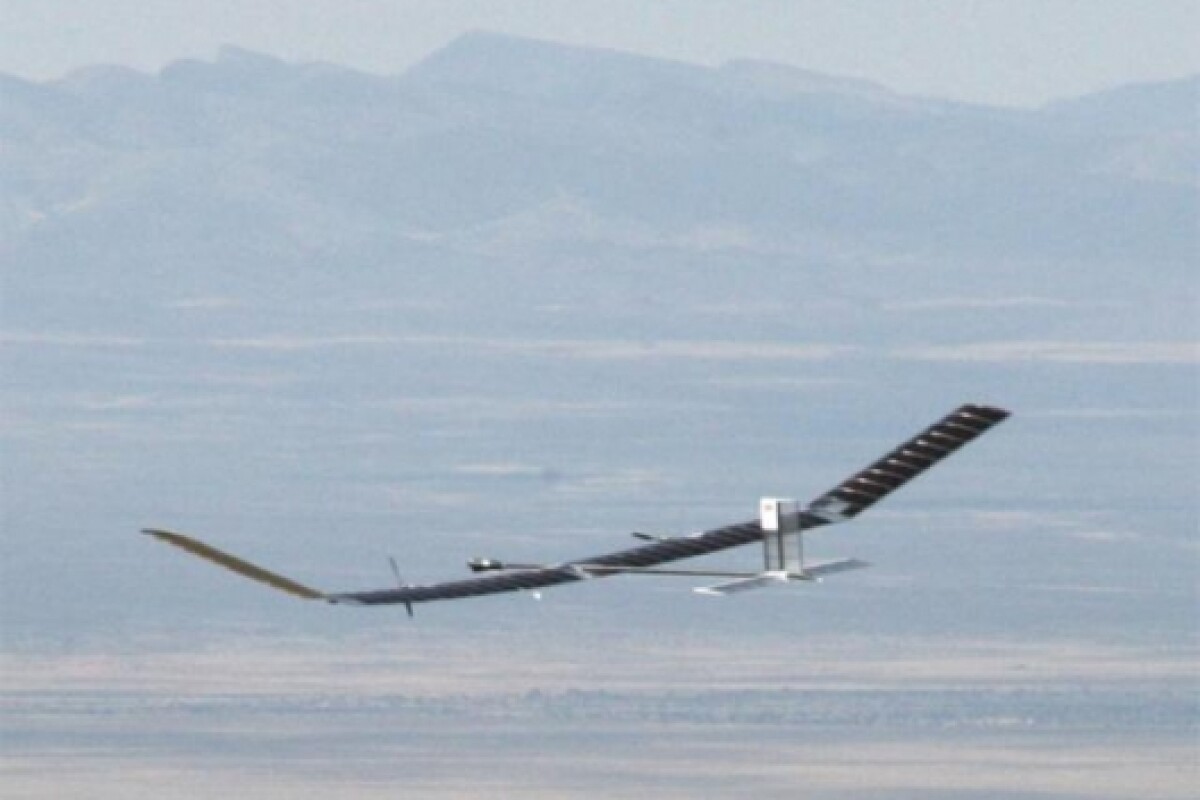September 11, 2007 Using new solar array technology and a tailor-built autopilot system, QinetiQ's Zephyr High Altitude Long Endurance Unmanned Aerial Vehicle has nearly doubled the official world record time for the longest duration unmanned flight with a 54 hour flight achieved during trials at the US Military's White Sands Missile Range in New Mexico.
The duration of the flight exceeded the current official FAI world record for unmanned flight which stands at 30 hours 24 minutes set by Northrop Grumman's RQ-4A Global Hawk on 22 March 2001. However because there was no FAI official present at White Sands it may not stand as an official world record.
Launched by hand, Zephyr is an ultra-lightweight carbon-fibre aircraft with a wingspan of up to 18 metres but weighing just 30 kg. By day it flies on solar power generated by amorphous silicon arrays no thicker than sheets of paper that cover the aircraft's wings. By night it is powered by rechargeable lithium-sulphur batteries that are recharged during the day using solar power.
The trials validated recent modifications that have improved the efficiency of Zephyr's power system. These have included new solar arrays supplied by United Solar Ovonic, a full flight-set of Sion Power batteries as well as a novel solar-charger and bespoke autopilot developed by QinetiQ, all of which were being flown for the first time. During the trials the same aircraft was flown twice while carrying a surveillance payload – first for 54 hours to a maximum altitude of 58,355 feet, and then for 33 hours 43 minutes to a maximum altitude of 52,247 feet.
Paul Davey, Zephyr business development director at QinetiQ, said: "The possibilities suggested by unmanned flight are truly exciting and with these trials Zephyr has secured its place in the history of UAV development. Both flights were achieved in the face of thunderstorms and debilitating heat in the hostile environment of the New Mexico high desert in the summertime. They have proved that an autonomous UAV can be operated on solar-electric power for the duration required to support persistent military operations."
Potential applications for Zephyr include earth observation and communications relay in support of a range of defence, security and civil requirements.
Zephyr has demonstrated consistent progress during a series of flight trials at White Sands Missile Range. In December 2005 two aircraft achieved a maximum duration of 6 hours and an altitude above 26,000 feet. The maximum flight duration was trebled to 18 hours and the maximum altitude increased to 36,000 feet at subsequent trials at the missile range in July 2006.





